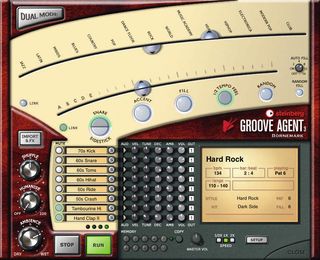

It is essential to better understand topological effects in DNA complexes of diamidines if their activity profile is to be enhanced in a rational manner. The development of therapeutics against neglected and deadly parasitic diseases, for which adequate drugs are not available, is critically important since resistance to current drugs, which are quite toxic, has been reported ( 7). In order to test the hypothesis that compound induced topological changes in kDNA are important for their antiparasitic activity, it is first necessary to determine whether the compounds can actually cause topological changes in DNA and if so, how the changes depend on compound structure and DNA sequence. The kDNA minicircles have short A-tract sequences that are in phase with the helix repeat such that they always appear on the same side of the double helix and their curvature is roughly additive. Intrinsic bending by specific DNA sequences was first discovered in kDNA of the mitochondrial kinetoplast of some parasitic microorganisms ( 5, 6). Designed small molecules that could selectively affect DNA bending would, thus, be valuable for control of expression of some genes. Changes in DNA topology are clearly important in regulation of transcription of many genes and modulation of bending can enhance or reduce transcription. Such bent sequences can be selectively recognized by control proteins or complexes and serve a functional role in gene expression. Intrinsically bent DNA is also a common feature of key DNA control elements such as promoters ( 4). However, given the AT rich composition of minicircles, their A-tract sequences and the tight curvature of a minicircle of ∼1000 bp, it is likely that topological changes in the DNA minicircles induced by minor groove binding have a part in antiparasitic activity. The complete mechanism by which this occurs has not been determined. The conformational change at the binding site then leads to significant bending of the alternating DNA sequence.Ĭompounds, such as the diamidines in Figure 1, bind strongly to AT minor groove sites and target AT rich sequences in kinetoplast minicircle DNA (kDNA), with subsequent destruction of the kinetoplast and cell death ( 1–3).

With ATATA the groove is intrinsically wider and must close to bind the compounds tightly. These results are interpreted in terms of a groove structure for A5 which is largely pre-organized for a fit to the heterocyclic amidines. Results with a mixed cis sequence, which has one A5 and one ATATA, show that the compounds bend ATATA in the same direction as a reference A5 tract, that is, into the minor groove. Surprisingly, however, with ATATA all of the compounds caused significant bending, to values close to or even greater than the A5 bend angle. With the bent A5 ladder the compounds caused either a slight increase or decrease in the bending angle. Complexes of these DNAs with three diamidines containing either furan, thiophene or selenophene groups flanked by phenylamidines were investigated along with netropsin.

Bending by the A5 tract is observed, as expected, while the ATATA sequence bends DNA very little. To determine what topological changes antiparasitic heterocyclic dications can have on kinetoplast DNA, we have constructed ligation ladders, with phased A5 and ATATA sequences in the same flanking sequence context, as models.


 0 kommentar(er)
0 kommentar(er)
